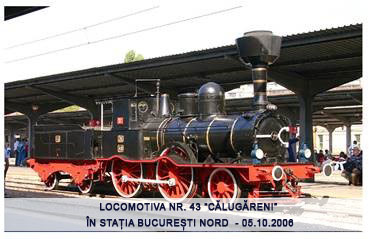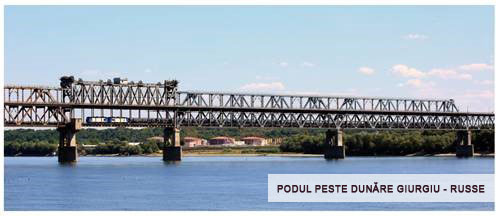In 1869, Romania became the third country in Eastern Europe, after Russia and the Ottoman Empire (in Dobrogea) which had a railway line. The first cities interconnected by a railway were Bucharest and Giurgiu.
In the summer of 1869, the construction of the Bucharest – Filaret – Giurgiu line was completed and on August 26, King Carol I left by train for Giurgiu, from where he then traveled on the Danube to Germany. This was an isolated line with a length of 67 km, which connected the capital with the Danube and a direct connection with the East and the West.


On June 20, 1954, the inauguration of the bridge over the Danube from Giurgiu takes place (Friendship Bridge 3.9 km) – with a length of 2224 m – with two levels (railway and car) which made the direct railway connection of Romania with Bulgaria, through Russian border crossing.
Thus, the Bucharest – Giurgiu – Ruse railway became a main international route until 2005, when the railway bridge from Grădiștea collapsed due to floods, the traffic currently taking place through Videle.
Also, the shortest road from Romania to Vienna in 1869 was from Bucharest to Giurgiu, by train, and then by boat on the Danube to Vienna.
Did you know that?
In the autumn of 1868, the poet Mihai Eminescu traveled to the University of Vienna, on the fresh line Vicşani – Suceava. It was inaugurated in the middle of 1868 – a section that was part of the Austro-Hungarian Empire and made the railway connection between Vienna and Suceava (1075 km).
Bibliography:
The small monograph of the Romanian railways, vol 5, 1999, author Ing Radu Bellu
HISTORY OF THE ROMANIAN RAILWAYS, Bucharest 2014, authors CENAFER and the CFR Museum
Other articles on the same subject:
CFR Călători, partner of Connecting Europe Express! click here
The future of transport is the railway – Chose the railway! click here
Romania – Founding Member of the International Union of Railways! click here
Railway transport – the Most Ecologic Type of Passenger Transport in Europe click here
Steam locomotives museum in Reșița click here
The “Ceferiada” Event click here
Steam locomotives museum in Dej click here
Rail transport connects Europe click here
Intelligent transport click here
The TRAIN = The railway transport is cleaner click here
140 years from the first railway built entirely by Romanian engineers click here
The beginning of railways in Europe click here
Explore the railway route Suceava – Putna click here
The history of the royal train – CFR Călători click here
The Danube Cliff and the Filești Tunnel in the European Year of Railways click here
The Filiași – Bumbești – Livezeni railway click here
The Caracău Viaduct – the largest concrete arched viaduct in Romania click here
The Royal Station of Bucharest Băneasa click here








